|
Wisley's Alpine Log
By Paul Cumbleton
Log 26 .... 18th December 2008
This Christmas log is also the last for 2008. Outside there is little colour left on the rock garden,
but we take advantage of this time when many plants have died down for winter to renew our gravel mulch on
the beds. We are using a grey granite chipping and carry it in our small motorised barrow out to the rock
garden before it is transferred a bit at a time into buckets and then on to the beds.
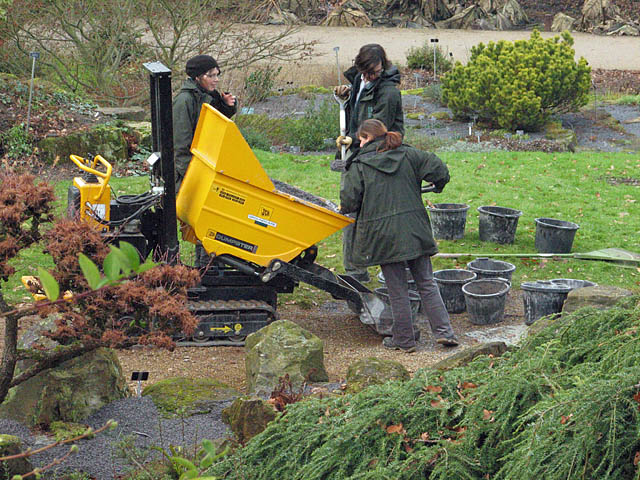
Applying new gravel
A fresh layer
of gravel can make a bed look much smarter even when the plants are not at their best.
br>
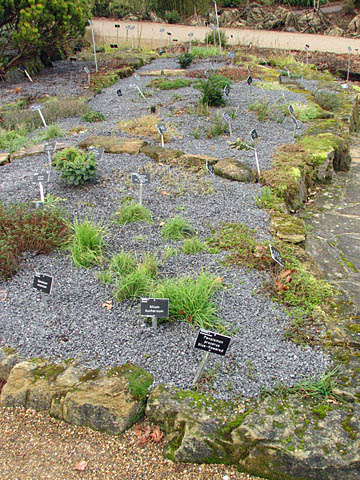
Freshly gravelled bed
As we do these last jobs before the holidays our minds are inevitably on Christmas and there is much to see
in the garden relating to the festival. Along the pathway at the bottom of the rock garden - which forms t
he main route to the large Glasshouse - an avenue of Christmas trees have been installed lining the edges
of the ponds. This is one example:
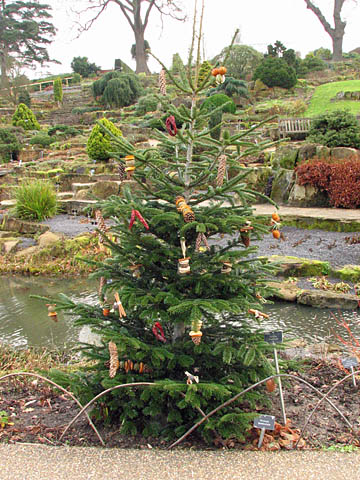
Xmas tree
They have been entirely decorated using natural materials such as dried fruits, cones and cinnamon sticks.
Here are some examples of the decorations:
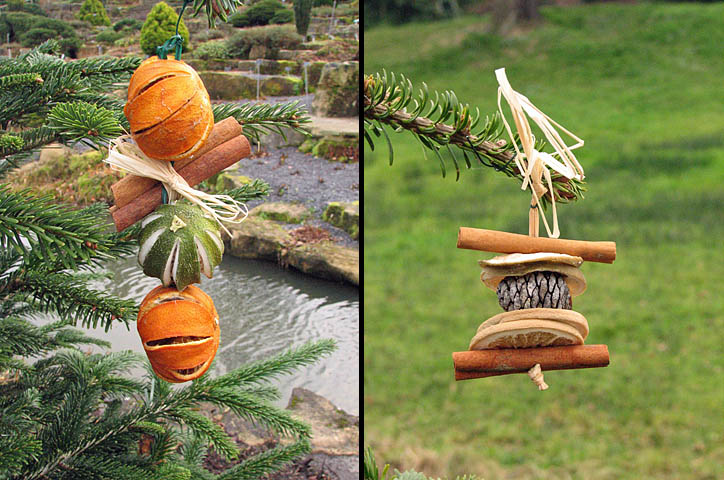
Natural decorations 1
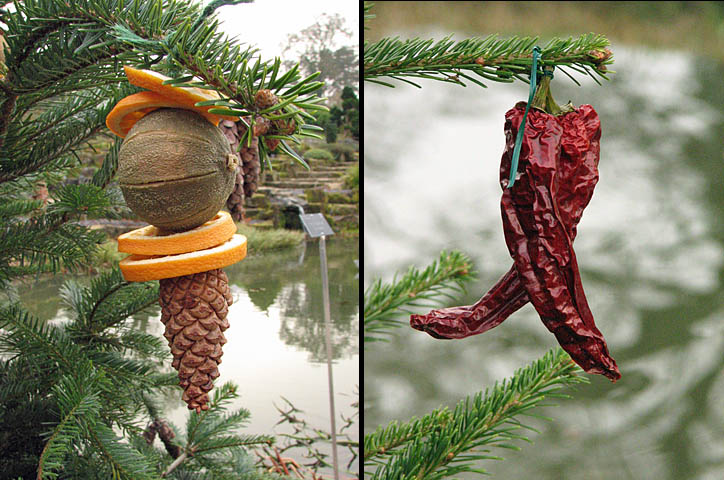
Natural
decorations 2
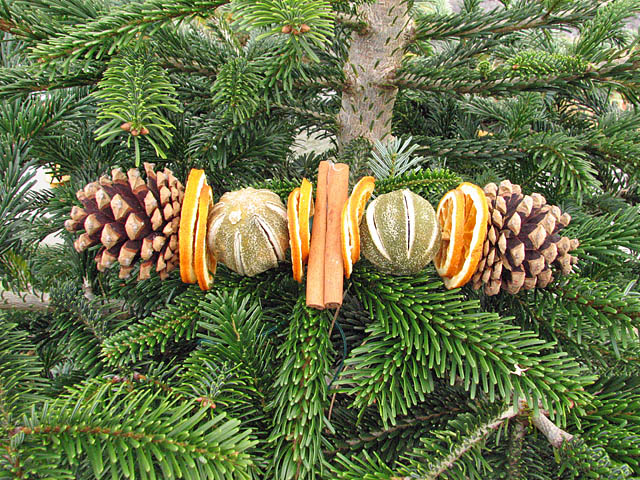
Natural decorations 3
While we like these a lot, the Mallard ducks on the ponds are obviously unimpressed:
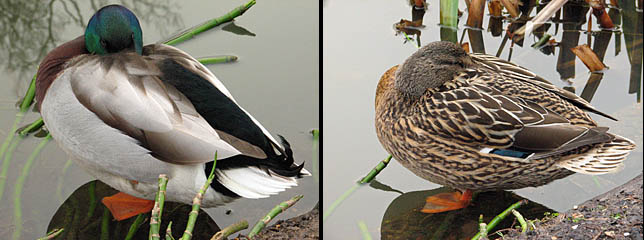
Sleepy Mallards
While our alpine display house still looks good, the real 'wow' colour for Christmas is really to be
found in the big Glasshouse so I'm venturing away from our area now to give you a glimpse of this. T
here are various plants which are particularly associated with Christmas, either directly in some way,
or simply because they are often given as gifts at this time. The "florist" Cyclamen, cultivars and
hybrids of Cyclamen persicum are the first to greet you at the entrance.
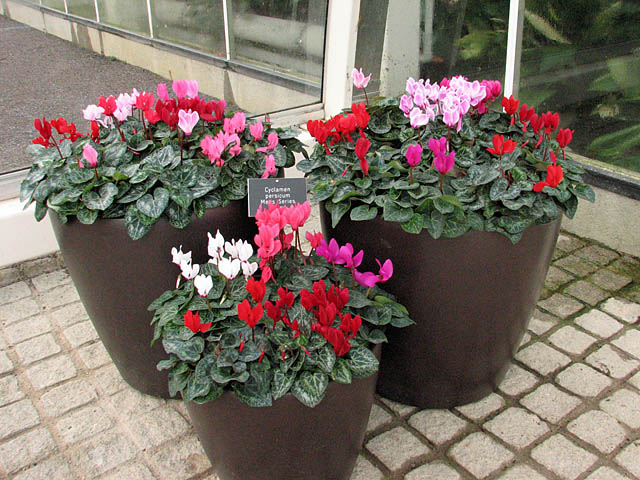
Cyclamen
Inside too, more of these are
bedded out to give a splash of colour:
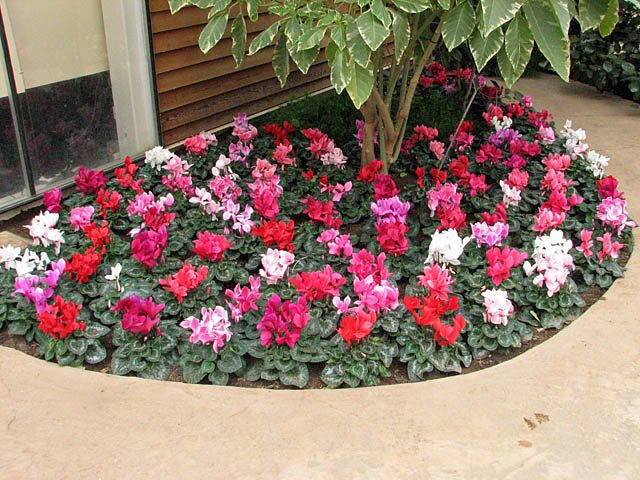
Cyclamen
2
I much prefer the natural species we grow in the alpine department, but I still think it's amazing how
much development in colour, habit and size they have managed to breed into these Cyclamen used as houseplants.<
br>
Poinsettias (Euphorbia pulcherrima) are of course hugely popular at Christmas and there are lots on
display:
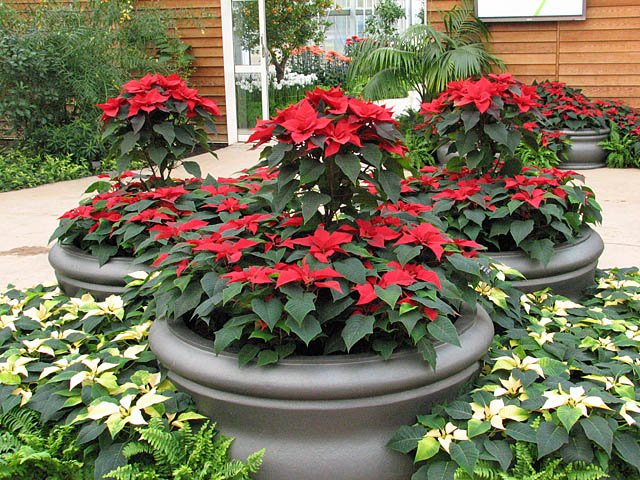
Poinsettias
The brilliant colour
is from bracts at the ends of the shoots. While you can get varieities with pink, cream, orange, pale green or marbled
bracts, the vast majority of people still prefer the flaming red coloured ones. They are grown by the million every
year for the festive season and are hugely popular - over $220 million worth are sold in the USA alone each holiday
season. While we are used to them as short, branching pot plants, in the wild they are small shrubs or small trees.
Those who live in warmer climes may laugh at the small things we grow in pots when they have them as hedges up to 5
meters high!
Some bulbs are specially treated so as to flower for Christmas. Hyacinths are a popular choice as
in this large basket:
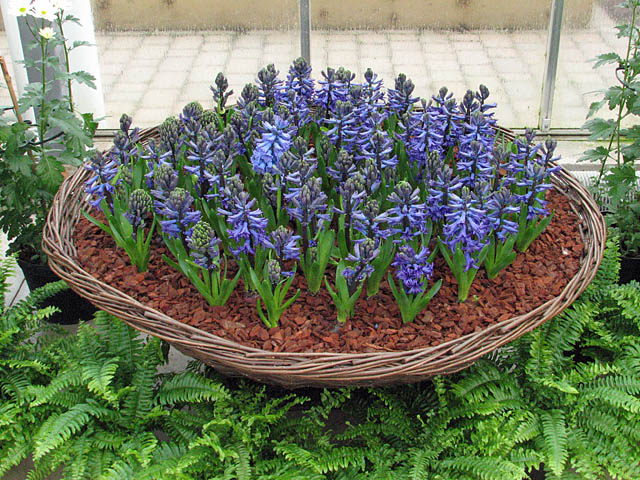
Hyacinths
Hippeastrum
cultivars are also popular Christmas presents. Recent breeding programmes have produced many new varieties in
recent years, such as this Hippeastrum 'Lima'
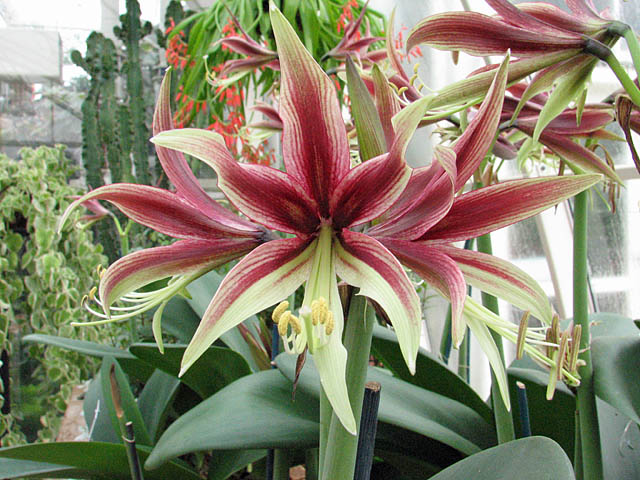
Hippeastrum 'Lima'
We all like baubles for decorations, but how about a giant one made up of air plants?
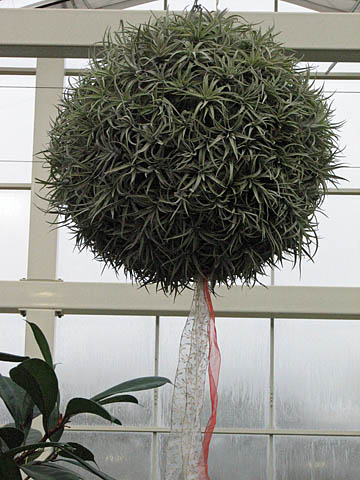
Air plant bauble
Christmas cacti (Schlumbergera species and hybrids) are another obvious favourite for the season so these
could not be missed in the Christmas displays:
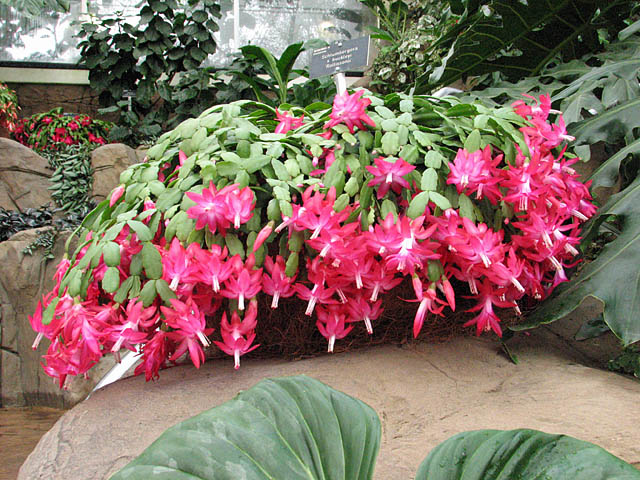
Schlumbergera hybrid
Legend has it that the crown of thorns placed on the head of Jesus Christ at his crucifixion
was made from the stems of Euphorbia millii, which is therefore commonly known as the crown of thorns plant.
Though native to Madagascar, there is some evidence that it had been brought to the Middle East before Jesus' time.
The pliable stems can be bent into a circle too, so there is some credibility to the legend, but we cannot be certain
about it.
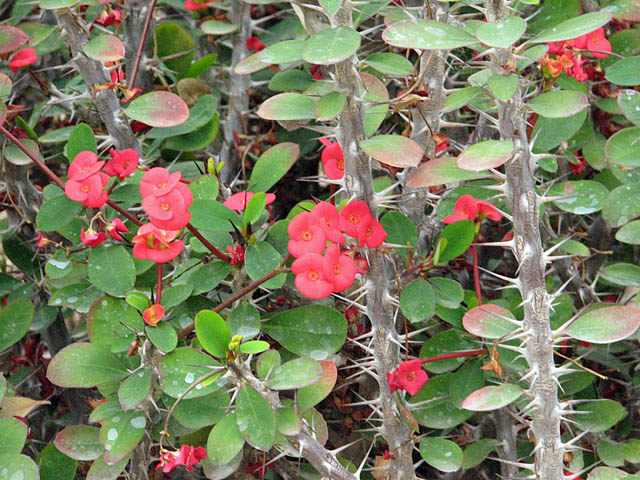
Euphorbia millii
Like the C
yclamen, another plant that has been highly developed and often seen at Christmas is the Kalanchoe, particularly K.
blossfeldiana which is commonly known as 'Flaming Katy'.
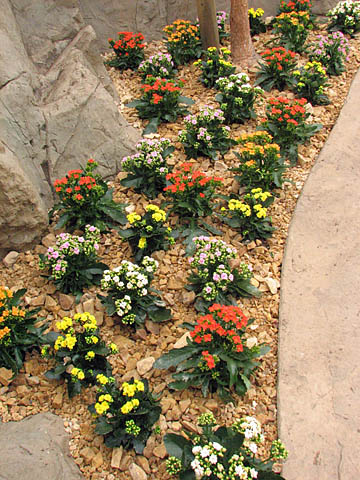
Kalanchoe
There is plenty more to see in the Glasshouse. Large vases show arrangements with Christmas colours:
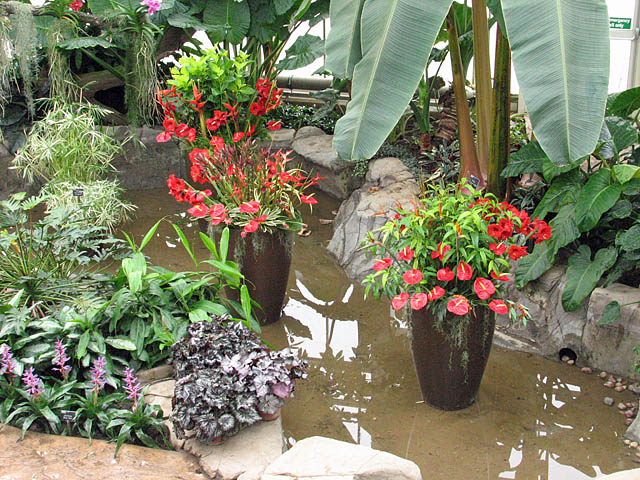
Xmas Vases
Various trees like this one have t
heir own decorations:
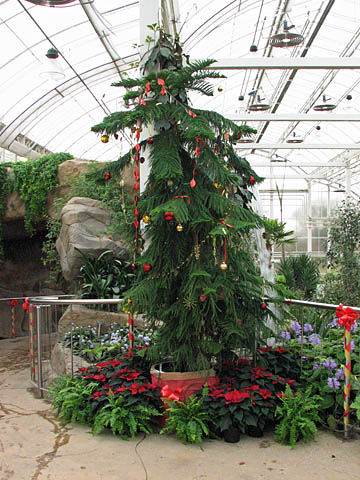
Decorated tree
Orchids
put on a treat of a show:
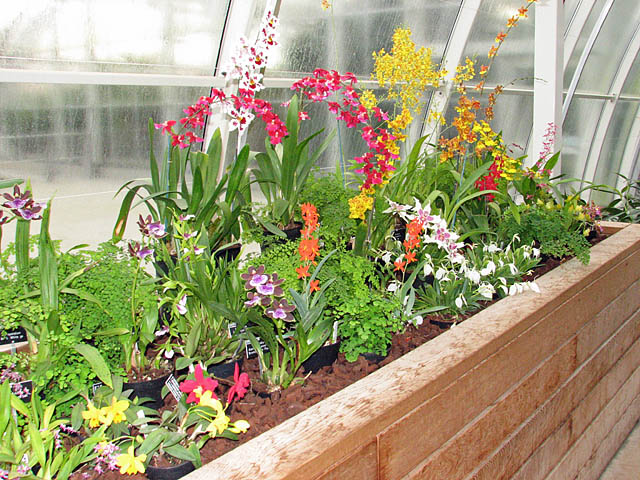
Orchid Display
Finally, I would like to thank all of you who have taken the trouble to read the log over the past year. I hope you have enjoyed it. From all the staff here in the Alpine Department at Wisley, may we wish you the happiest of Christmases and good growing for 2009!
^ back to the top ^
|

